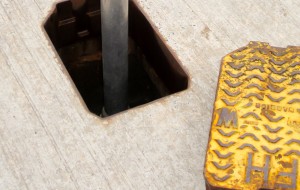The Fire Hydrants used by fire and rescue services to supply water for firefighting are called statutory hydrants. This is as opposed to private fire hydrants found on private water mains. They are mainly found on pavements or on the road. They can also be in nearby public spaces, such as grass verges. Being in such areas leave them subject to natural wear and tear and damage. But what would you do if you noticed damage to a fire hydrant?
All statutory hydrants are inspected to make sure they are in perfect working order. This means carrying out regular maintenance on the units and making minor repairs. However, between maintenance and inspection, damage to the units can occur. By teaching members of the public what they can look out for, we can make sure that any damage is dealt with a lot sooner.
How can YOU help?
There are certain things that members of the public can help with. Here are a few tips on what you can look out for and what to do, should you discover a problem.
Missing, damaged or blocked Fire Hydrant marker plates
Hydrant marker plates are rectangular yellow signs with a large black H in the centre and a pair of numbers, usually attached to a wall, lamp post or a short concrete post. Missing or damaged marker plates are usually easily rectified and once reported; they can be repaired in due course. So if you notice that the one at the end of your street is missing, or the one you pass on your way to work has been vandalised, report it.
This being said; all hydrants are shown on digital maps available in fire engines, so the nearest one can be found whilst the fire brigade is on route to an incident. So, even if the marker plates are missing or broken, the fire service should be able to still find them. However, this is only for most cases, but unfortunately not all.
If the marker plate is covered by overgrown grass or plants, residents can help by cutting back any plants/bushes that are blocking view of the indicator post. 
Dangerous, missing or cracked hydrant covers/frames
When there is damage to a fire hydrant cover or it is missing, it can expose the hydrant itself to the elements. This can cause it to freeze or get blocked with mud/silt. This will stop it from working when the firefighters need it which has catastrophic results.
Fire Hydrants are an essential part of fire safety. Therefore, it is vital they are well maintained so they are always in working order. If you spot any problems, always report it if you can.
Remember; when located on private property, the damage to a fire hydrant and its maintenance is the responsibility of the land or business owner. Regular inspection and maintenance enable fire fighters to have access to the tools they need to save lives.
Total Safe offers Fire hydrant testing throughout the South East. For all hydrant related enquires, contact the team today.
